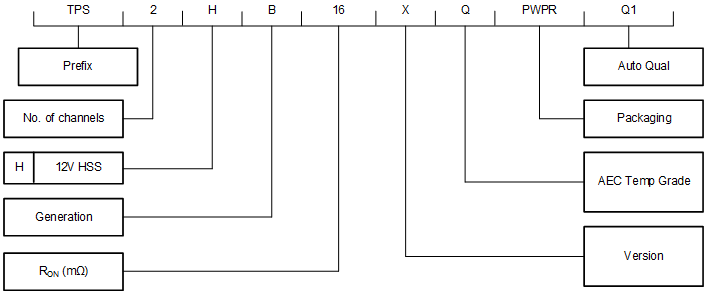ZHCSJN4C February 2018 – February 2020 TPS2HB16-Q1
PRODUCTION DATA.
- 1 特性
- 2 应用
- 3 说明
- 4 修订历史记录
- 5 Device Comparison Table
- 6 Pin Configuration and Functions
- 7 Specifications
- 8 Parameter Measurement Information
-
9 Detailed Description
- 9.1 Overview
- 9.2 Functional Block Diagram
- 9.3
Feature Description
- 9.3.1 Protection Mechanisms
- 9.3.2 Fault Event – Timing Diagrams - Version F
- 9.3.3 Diagnostic Mechanisms
- 9.4 Device Functional Modes
- 10Application and Implementation
- 11Power Supply Recommendations
- 12Layout
- 13器件和文档支持
- 14机械、封装和可订购信息
9.1 Overview
The TPS2HB16-Q1 device is a dual-channel smart high-side switch intended for use with 12-V automotive batteries. Many protection and diagnostic features are integrated in the device.
Diagnostics features include the analog SNS output that is capable of providing a signal that is proportional to load current or device temperature. The high-accuracy load current sense allows for diagnostics of complex loads. Version F of the device includes open drain FLT1 and FLT2 pins that indicates device fault states.
This device includes protection through thermal shutdown, current limiting, transient withstand, and reverse battery operation. For more details on the protection features, refer to the Feature Description and Application Information sections of the document.
The TPS2HB16-Q1 is one device in a family of TI high side switches. For each device, the part number indicates elements of the device behavior. Figure 35 gives an example of the device nomenclature.
 Figure 35. Naming Convention
Figure 35. Naming Convention